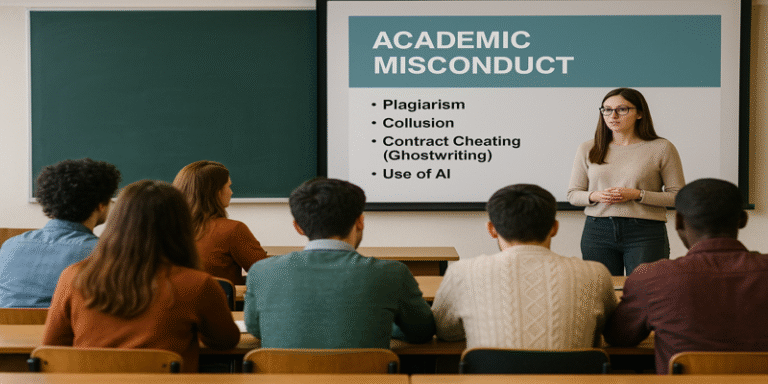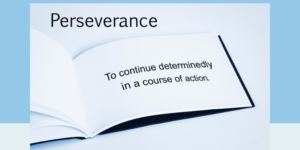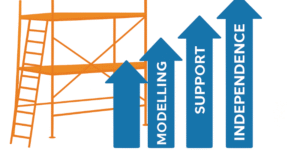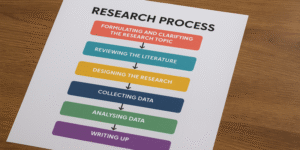Academic misconduct and malpractices are persistent challenges facing higher education institutions worldwide. They undermine the integrity of assessment, damage institutional reputation, and devalue qualifications (Sozon et al., 2024). The increasing accessibility of digital resources and online services has made academic dishonesty more complex and harder to detect. Traditional forms of misconduct such as plagiarism and collusion are now compounded by emerging threats such as contract cheating and the use of artificial intelligence (AI) to generate assignments. This article explores these four critical forms of misconduct, drawing upon academic literature, case studies, and institutional reports to analyse their causes, manifestations, and possible strategies for mitigation.
Defining Academic Misconduct and Malpractice
Academic misconduct is broadly defined as behaviour that compromises the integrity of learning, teaching, and assessment by gaining an unfair academic advantage (Velliaris, 2019). Malpractice, often used interchangeably, refers to dishonest or unethical academic behaviour, whether intentional or accidental. According to Ali, Sultan and Aboelmaged (2021), misconduct encompasses activities such as cheating, plagiarism, collusion, data fabrication, falsification, and impersonation.
The advent of digital platforms, contract cheating services, and AI tools has expanded the scope of misconduct, requiring institutions to rethink traditional academic integrity frameworks (Pellerin & Ogandaga, 2024).
Below is a summary of four major forms of academic misconduct and malpractice that university students often, either knowingly or unknowingly, engage in:
1.0 Plagiarism
1.1 Definition and Forms
Plagiarism is the presentation of another person’s work, ideas, or words as one’s own without proper acknowledgement. It can take various forms, including copy-and-paste plagiarism, self-plagiarism, paraphrasing without citation, and mosaic plagiarism (Deslauriers, 2025).
For example, a student who copies text from a website without citing the source engages in direct plagiarism, while a student who paraphrases a journal article but omits referencing commits implicit plagiarism.
1.2 Consequences and Challenges
Plagiarism damages academic credibility and erodes trust between students and institutions. As Ogwueleka (2025) notes, it undermines creativity and critical thinking, reducing the value of higher education qualifications. Detection tools such as Turnitin and emerging AI-based detection systems have helped to identify copied content, but these systems face challenges with paraphrased or AI-generated text (Johnson, 2023).
2.0 Collusion
2.1 Definition and Examples
Collusion occurs when students work together inappropriately, submitting joint work as individual effort or receiving unpermitted assistance. Unlike collaboration, which is often encouraged, collusion breaches academic integrity when it obscures individual contribution (Sozon, Alkharabsheh & Pok, 2025).
For instance, two students may agree to divide sections of an essay and then submit the combined work as separate submissions, which constitutes collusion.
2.2 Implications
Collusion undermines fairness in assessment and creates difficulties for educators in evaluating individual understanding (Velliaris, 2019). It may also damage trust among peers if students perceive inequities in how assessment rules are applied.
3.0 Contract Cheating and Ghostwriting
3.1 Contract Cheating
Contract cheating involves students outsourcing their assignments, dissertations, or projects to third parties who complete the work in exchange for payment (Lancaster et al., 2025). This practice has expanded globally due to the rise of online “essay mills” that market academic work directly to students.
According to Xu and Li (2023), contract cheating is particularly problematic because it bypasses traditional plagiarism detection software: the purchased work is original but not authored by the student.
3.3 Ghostwriting
Ghostwriting is closely related to contract cheating, in which a third party writes work for a student, often for a fee, but without attribution (Möller, 2023). Ghostwriting is considered one of the most severe forms of misconduct because it completely misrepresents a student’s abilities and undermines the credibility of higher education qualifications.
3.4 Real-World Example
The UK has taken legislative steps against essay mills, making it illegal to provide or advertise commercial contract cheating services (Lancaster et al., 2025). Despite such regulations, providers continue to operate internationally, often exploiting students’ anxiety about academic performance or language barriers (Deslauriers, 2025).
4.0 The Use of Artificial Intelligence in Academic Work
4.1 Emerging Opportunities and Risks
The rise of generative AI tools such as ChatGPT and other large language models presents new challenges for academic integrity. While these technologies can support learning by offering feedback, generating ideas, or aiding in language refinement, they can also be misused for automated essay generation and exam cheating (Lund et al., 2025).
Sozon, Alkharabsheh and Fong (2024) highlight that AI blurs the boundaries between legitimate assistance and misconduct, as students may present AI-generated outputs as their own work without attribution.
4.2 Academic Responses
Institutions are responding by updating policies, assessment design, and detection tools. Lancaster and Draper (2025) argue that universities must explicitly address AI misuse in academic integrity policies, ensuring that students understand when and how AI can be ethically integrated into their work.
4.3 Example
In 2023, several Australian universities shifted back to handwritten exams and in-person assessments after reports of students using generative AI to complete online tests (Nwozor, 2025). This demonstrates the immediate impact of AI on assessment integrity.
Addressing Academic Misconduct and Malpractice
Preventive Strategies
Preventing academic misconduct requires a multi-layered approach:
- Education and Awareness: Institutions must provide students with clear guidelines on plagiarism, collusion, and acceptable use of AI (Pellerin & Ogandaga, 2024).
- Assessment Design: Authentic assessments, oral examinations, and project-based tasks reduce opportunities for contract cheating (Velliaris, 2019).
- Technological Solutions: AI-driven plagiarism detection, authorship verification, and forensic text analysis tools are being developed to identify both human and machine-generated misconduct (Siddhpura & Siddhpura, 2020; Johnson, 2023).
Ethical and Cultural Considerations
Academic integrity is not only a technical issue but also a cultural and ethical challenge. Deslauriers (2025) argues that institutions should foster a culture of honesty by embedding integrity into teaching and learning rather than relying solely on punitive measures. Moreover, differing cultural understandings of authorship and collaboration require sensitive, context-specific responses (Sozon et al., 2025).
Academic misconduct and malpractice threaten the credibility of higher education. Plagiarism, collusion, contract cheating, and the misuse of AI are interconnected issues requiring both preventative and corrective measures. While technology offers tools for detection, the foundation of academic integrity must be built on education, ethical awareness, and fair assessment practices. The challenge for universities lies in balancing technological innovation with the preservation of academic standards. Moving forward, policies must be adaptive, ensuring that academic integrity remains robust in an era of rapid digital transformation.
References
Ali, I., Sultan, P. & Aboelmaged, M. (2021) ‘A bibliometric analysis of academic misconduct research in higher education: Current status and future research opportunities’, Accountability in Research, 28(7), pp. 423–446. Available at: https://doi.org/10.1080/08989621.2020.1836620.
Deslauriers, S. (2025) ‘Where Plagiarism Ends, but Intellectual Dishonesty Persists’, Journal of Education and Human Development, 14(1), pp. 45–60. Available at: https://jehd.thebrpi.org/journals/jehd/Vol_14_2025/1.pdf.
Johnson, C. (2023) Understanding academic integrity and plagiarism in the digital age: can digital forensics techniques help prevent and detect academic misconduct? ProQuest Dissertations Publishing. Available at: https://search.proquest.com/openview/7daea3e069ea6315452f90107b922ad1/1.
Lancaster, T., Draper, M. & Dann, S. (2025) Developing Policies to Address Historic Contract Cheating and Misuse of Generative Artificial Intelligence. Northampton: University of Northampton. Available at: https://pure.northampton.ac.uk/files/81514647/Lancaster_et_al_2025_Developing_Policies_to_Address_Historic_Contract_Cheating_and_Misuse_of_Generative_Artificial_Intelligence.pdf.
Lund, B., Mannuru, N.R., Teel, Z.A., Lee, T.H. & Ortega, N.J. (2025) ‘Student Perceptions of AI-Assisted Writing and Academic Integrity: Ethical Concerns, Academic Misconduct, and Use of Generative AI in Higher Education’, AI in Education, 1(1), pp. 1–20. Available at: https://www.mdpi.com/3042-8130/1/1/2.
Nwozor, A. (2025) Artificial intelligence (AI) and academic honesty-dishonesty nexus: Trends and preventive measures. In: Handbook on AI and Quality Higher Education (Vol. 3). ResearchGate. Available at: https://www.researchgate.net/publication/384969429.
Ogwueleka, F.N. (2025) ‘Plagiarism Detection in the Age of Artificial Intelligence: Current Technologies and Future Directions’. In: AI and Ethics, Academic Integrity and the Future of Higher Education. ResearchGate. Available at: https://www.researchgate.net/publication/384969429
Pellerin, M. & Ogandaga, M. (2024) Rethinking Academic Integrity and Plagiarism for a New AI Era. Université du Québec en Outaouais. Available at: https://pupp.uqo.ca/wp-content/uploads/2024/05/G2024BookAbstractsFR-EN-1.pdf
Sozon, M., Alkharabsheh, O.H.M. & Fong, P.W. (2024) ‘Cheating and plagiarism in higher education institutions (HEIs): A literature review’, Journal of Academic Ethics, 22(3), pp. 315–334. Available at: https://pmc.ncbi.nlm.nih.gov/articles/PMC11489843/
Velliaris, D.M. (2019) Prevention and Detection of Academic Misconduct in Higher Education. Hershey, PA: IGI Global.









